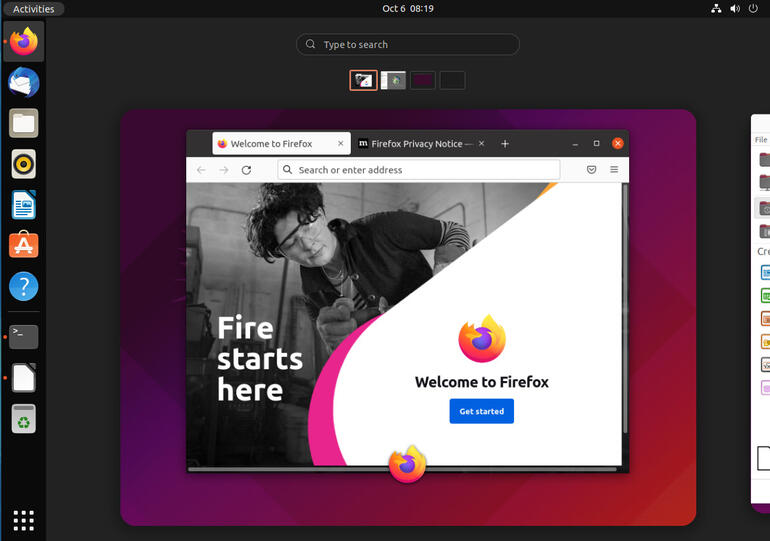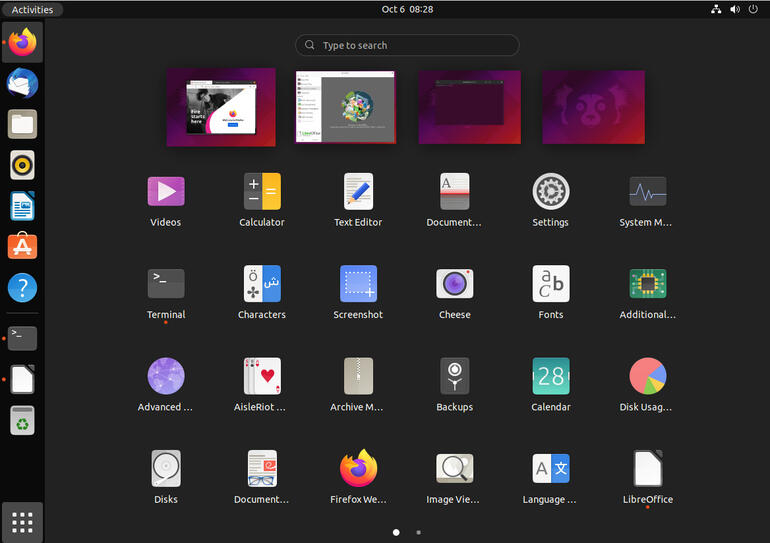Jack Wallen comes away from using Ubuntu 21.10 with the conclusion Impish Indri is the not only the most polished release from Canonical, but the most performant.

Image: Canonical
The official release of Ubuntu 21.10 is Oct. 14. This is a non-LTS release, so it won’t gain nearly the attention the LTS releases will receive. That’s a shame because although 21.10 (Impish Indri) might not at first blush include major changes, it does finally bring to Ubuntu one big shift that should make users very happy.
That shift comes in the way of GNOME 40. Yes, this iteration of the GNOME desktop has been out for some time, and many other distributions have been shipping with G40 for some time. So, GNOME 40 is old news within the Linux community. I’ve covered GNOME 40 a bit more in-depth in “GNOME 40 takes a few bold steps to improve the desktop.”
But for the Ubuntu community, GNOME 40 will be a welcome treat.
SEE: 5 Linux server distributions you should be using (TechRepublic Premium)
What does GNOME 40 bring?
If you’ve been paying attention, you know that GNOME 40 changed the workflow by way of a horizontal Activities Overview. You might think that’s not such a big deal. It is. One of the best things about the horizontal workflow is that it makes it considerably easier to manage multiple workspaces. With this new design (Figure A), users can easily drag applications to the workspace they want to use and quickly switch between them to keep work organized.
Figure A
” data-credit>
The new horizontal workflow that comes with GNOME 40 in Ubuntu 21.10.
Click the Activities button (top left corner of the desktop) to reveal all of your workspaces. Using your mouse scroll wheel, you can then scroll through each workspace and select the one you need. It’s a much-improved way of working with workspaces. And you should be using workspaces, as it makes keeping your desktop organized a snap.
That’s not the only route to selecting a workspace. Click on the Applications grid icon (bottom left corner) to reveal the installed applications (Figure B). This view also serves as a place to launch applications. And by dragging an application icon to a specific workspace, you no longer have to open the application, switch to the primary workspace, and then move the application to the workspace you want.
Figure B
” data-credit>
The GNOME 40 Applications overview in action.
Trackpad gestures
From the office of “It’s about time,” comes built-in trackpad gestures. Before you get your hopes up, we’re not talking Apple-level multi-touch gestures. There’s still no built-in right or left swipe to go back or forward in a browser. Nor is there a pinch to zoom. The included gestures are:
- Three-finger swipe left or right moves between workspaces.
- Three-finger up or down toggles the Overview.
That’s pretty much it. It’s a very small step forward for gestures. Hopefully, GNOME will eventually get a full complement of touchpad gestures (ones that will benefit a majority of users and not just those who make use of workspaces).
Included applications
The usual bevy of applications is found within Ubuntu 21.10, including:
- LibreOffice 7.2
- Firefox 93
- Thunderbird 91
- kernel 5.13.0.16
One bit that’s important to know is that GNOME Software, labeled Ubuntu Software, is now a snap app itself and seamlessly rolls in snap applications with regular applications. The Firefox release included with Ubuntu 21.10 is a snap app itself. When you first run Ubuntu Software, you’ll need to give it time to download the full catalog. Depending on your network connection, this can take up to 2-5 minutes to complete. As you poke around Ubuntu Software, you’ll find a good mixture of applications, from open-source to proprietary. You’ll even find snaps available for the likes of Spotify and Slack. Surprisingly, the snap for Zoom is missing. Fortunately, you can still install Zoom from the official .deb release.
Speaking of applications, the performance you’ll see in 21.10 is pretty amazing. Applications open almost instantly. This is probably the most performant release of Ubuntu I’ve ever experienced. That performance increase comes by way of Wayland improvements and GNOME 40. Those two pieces of the puzzle make a noticeable difference in how well Ubuntu performs (even when running as a guest virtual machine).
One thing of interest is that Ubuntu 21.10 doesn’t include the usual collection of GNOME apps, such as Maps and Weather. If you want those apps, you can install them from within Software. I’m just surprised they weren’t included by default. The Weather app is an especially nice touch for the desktop. I use this app regularly on Pop!_OS, so excluding it on Ubuntu’s GNOME-based desktop is an oddity.
Who’s the target audience?
Ubuntu has been, for years, labeled the Linux desktop for new users and that still holds true. Anyone would be able to log into Ubuntu 21.10 and start using it immediately. That doesn’t mean, however, they would make use of all the features. I would venture to say most new users won’t understand the concept of multiple workspaces out of the gate. But with GNOME 40, getting up to speed on that feature shouldn’t challenge many.
The reality of Ubuntu 21.10 is that it’s a perfectly capable desktop operating system for any user of any skill level. From new users to advanced users, anyone would do well on this release. And with the incredible performance brought about by GNOME and Wayland, it’ll please those who are always hungry for more and more power on your desktops.
No, Ubuntu 21.10 isn’t a major release, nor is it a Long Term Support release. Neither of those facts should keep you from giving Impish Indri a chance. Although it won’t pull me away from Pop!_OS, it’s certainly a worthy contender for my best distribution of 2021. It’s one of the most polished and performant releases to come from Canonical to date.
If you can’t wait until the full release on October 14, you can always download a daily build and kick the tires.
Also see
Source of Article





